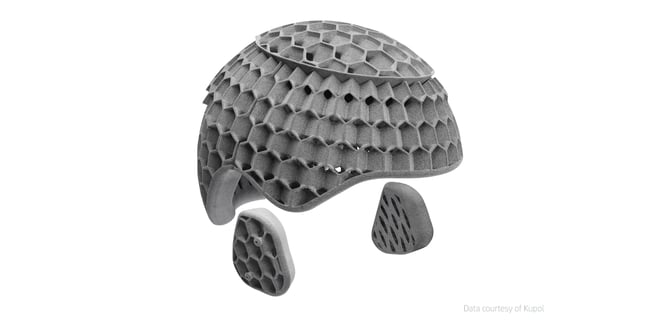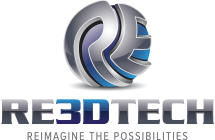
Are you interested in 3D printing services but uncertain how to optimize your design for this additive manufacturing technology? It’s important to know design and manufacturing best practices so you can walk away with a high-quality, cost-effective part that exceeds your expectations.
These key considerations are especially valuable for 3D printing at production volumes when considering factors like budget, turnaround, and quality at scale, but they’re important for prototyping as well.
5 Design and Manufacturing Considerations for 3D Printing
Volume to Surface Area Ratio
Volume to surface area is a baseline metric for understanding a part’s thermal mass—and you’ll want to reduce that thermal mass whenever possible. The larger the volume of a part, the more thermal energy will build in every single layer. When a part has hundreds or thousands of layers, thermal energy buildup often leads to distortion and warping.
The best way to decrease thermal mass is to look for opportunities to reduce volume and increase surface area.
Let’s use a brick as an example. You might assume that a solid cube is cheaper and easier to produce—and if you were machining the part, you’d be right. But with 3D printing, you’re better off designing 100 holes through the brick because less mass requires less heat, reducing the likelihood of a deformed part. Shelling and latticing are other options for reducing volume and increasing surface area.
Fillets
Filleting—the process of rounding off hard edges—ensures that a 3D part is dimensionally accurate. Why? Because parts with hard edges have the tendency to “cup” when we upload STL files.
Using that same brick as an example, any hard edges could potentially pull up and develop a lip, easily adding an extra 200-300 μ to the overall outside measurements. Adding a .25mm to .5 mm fillet on each edge is all it takes to achieve the desired tolerances and improve the quality of your parts—and if you’re choosing a quality manufacturer for 3d printing services, it won’t cost you anything more. As the team at Re3DTech likes to say, “Fillets are your friend!”
Size
While it’s possible to 3D print a part in a wide range of sizes, a part that’s unusually large (or small) is generally more expensive to make. For the most cost-effective 3D part, your bounding box—the smallest cube possible that could contain the part—should be in the range of 3” to 6” square.
Re3DTech always steps in to help our customers however we can, so we encourage engineers to be aware of this dimensional sweet spot when designing their parts. When you’re running high production volumes, the savings you receive from designing an optimal part size add up fast.
Strength
There’s a common conception that 3D printed parts aren’t as strong or stable as metal machined parts, but that isn’t necessarily true. If you have flexibility and don’t necessarily need metal, then 3D printed plastics are often comparable in strength to aluminum machined parts—and they can often be made with a faster turnaround and for lower costs. Next time you’re designing for a part machined out of aluminum, consider 3D printing instead. You won’t regret it!
Post-processing
Post-processing is an important part of our service offering at Re3DTech, enabling us to improve part quality and deliver a consistent, cosmetically-enhanced appearance, cosmetically-enhanced appearance. The first step in post-processing is to remove any remaining powder from all holes and cavities in the part. To ensure that post-processing is cost-effective, avoid creating very small, hard to reach cavities in your part design.
Now that you’re aware of design and manufacturing best practices for 3D printing, are you ready to give it a shot? Re3DTech provides everything from 3D printing rapid prototyping services to high volume production. Request a quote today!
At Re3DTech, we believe that 3D printing will repatriate and revitalize our manufacturing industry – and is the future of American manufacturing! Re3DTech provides 3D printing and contract manufacturing services with a commitment to quality, speed, and customer service. We supply thousands of parts to customers every week in industries including Healthcare, Automotive, and Aerospace. It is our mission to provide a custom solution to our customers’ needs.
Leveraging our production additive manufacturing technologies, we have the in-house expertise and capabilities to help lead your company down the path of additive. Take advantage of the advances in 3D printing to improve your manufacturing - contact us today to see how we can help!



